The Vung Tau Lighthouse is a significant historical and architectural landmark in Vietnam, attracting both local and international tourists. Located on Tao Phung Mountain, it offers a panoramic view of Vung Tau City and the surrounding sea, making it a must-visit destination. We will explore the various aspects of the lighthouse, from its historical significance to travel tips, ensuring you have all the information needed for an unforgettable visit.
Information about Vung Tau Lighthouse
The lighthouse, an iconic structure in the coastal city of Vung Tau, stands proudly atop Tao Phung Mountain. The lighthouse is renowned for its cylindrical shape, painted white with a lantern room at the top.
History of the lighthouse
The lighthouse was constructed by the French in 1862, during their colonial period in Vietnam. It was initially built to serve as a lookout point for incoming trade ships, ensuring safe passage through the busy waters. Over the years, it has undergone several renovations to maintain its structure and functionality. The lighthouse is not only a navigational aid but also a testament to the historical and cultural heritage of Vung Tau. Its architecture reflects French colonial influences, adding to its charm and historical significance.
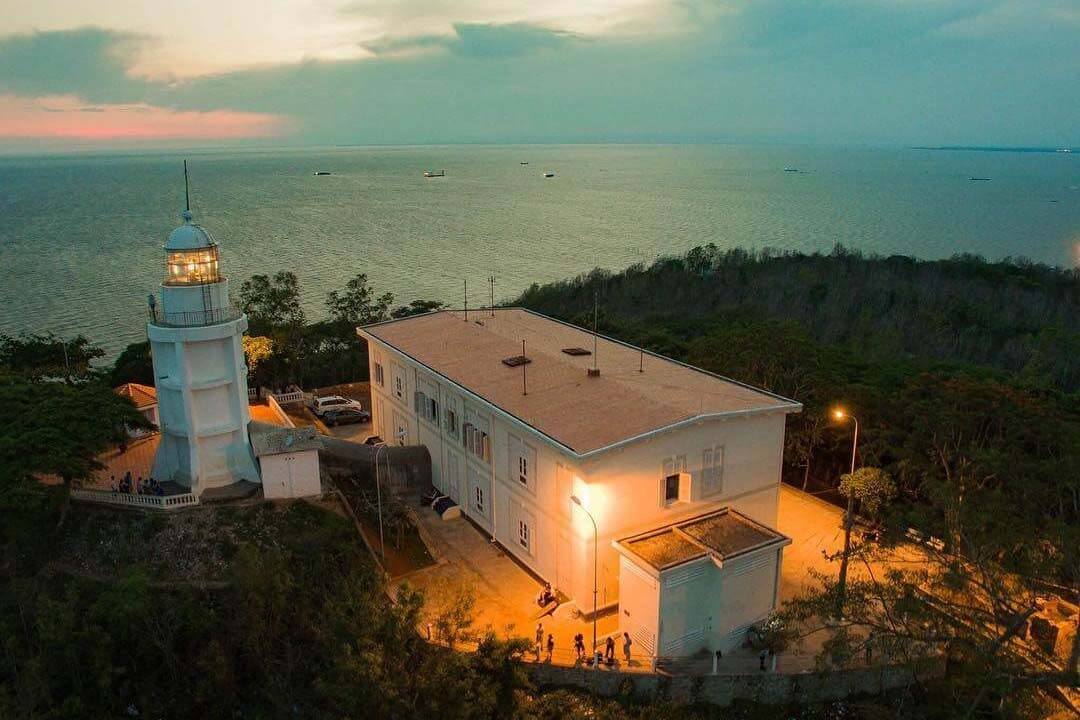
Where is Vung Tau Lighthouse?
The lighthouse is located at the peak of Tao Phung Mountain, which is one of the two prominent mountains in Vung Tau. It stands 149 meters above sea level, making it an ideal place to take in the stunning views of Vung Tau City from above. The location offers a serene and picturesque environment, perfect for those looking to escape the hustle and bustle of the city. The surrounding area is lush with greenery, providing a peaceful setting for visitors to explore.
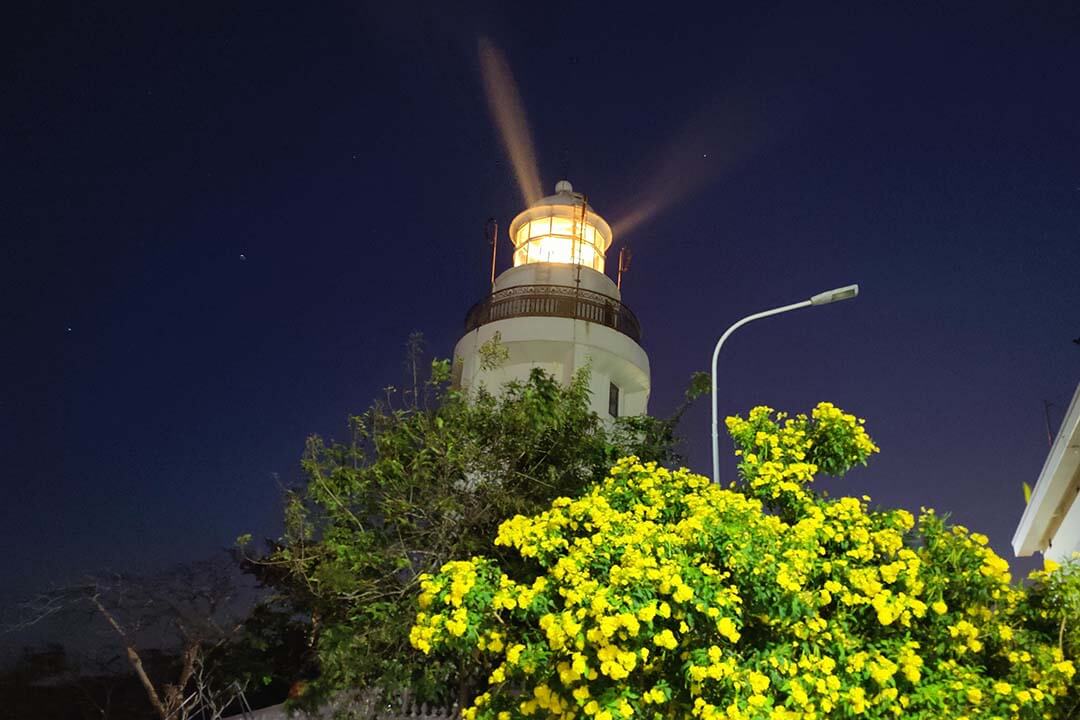
How to get to Vung Tau Lighthouse?
The way to get to the lighthouse is quite simple. Visitors can reach Vung Tau City by bus, car, or ferry from Ho Chi Minh City, which is approximately 95 kilometers away. Once in Vung Tau, the lighthouse is accessible via a scenic drive up Tao Phung Mountain. There are also options for hiking or cycling for those who prefer a more adventurous route. The journey to the lighthouse is as rewarding as the destination itself, with beautiful landscapes and stunning views along the way.
The best time to visit Vung Tau Lighthouse
The best time to visit the lighthouse is from November to April, during the dry season. During this month, the weather is consistently pleasant with clear skies and minimal rainfall, the weather is ideal for exploring the lighthouse and its surroundings, ensuring pathways and viewpoints are easily accessible.
Read about Vietnam climate to find the best time to visit Vietnam
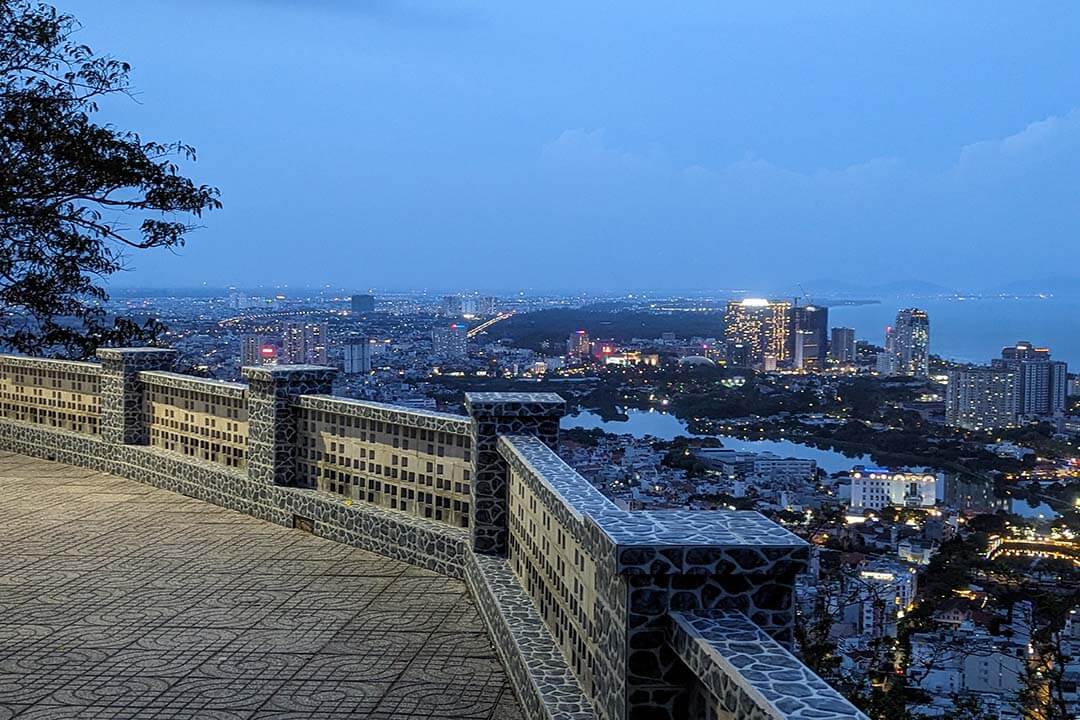
Visiting the lighthouse in the early morning or late afternoon is particularly advantageous. Cooler temperatures make the ascent to the lighthouse more comfortable. The early morning light bathes the landscape in a soft, golden hue, perfect for capturing stunning photographs. In contrast, the late afternoon provides an opportunity to witness the breathtaking sunset over the sea, creating a picturesque and serene atmosphere.
Things to do in Vung Tau Lighthouse
The lighthouse is not just a historical site but also a hub of activities for visitors. From photography to enjoying local cuisine, there are numerous things to do around the lighthouse that cater to all interests.
Take amazing photos with this lighthouse
The lighthouse is a prime location for capturing exceptional photographs. Its timeless architecture and pristine white exterior stand out dramatically against the deep blue sky and verdant landscape, providing a compelling subject for any camera. The lighthouse’s historical design adds a layer of sophistication to each image, while the surrounding natural beauty enhances the visual appeal.
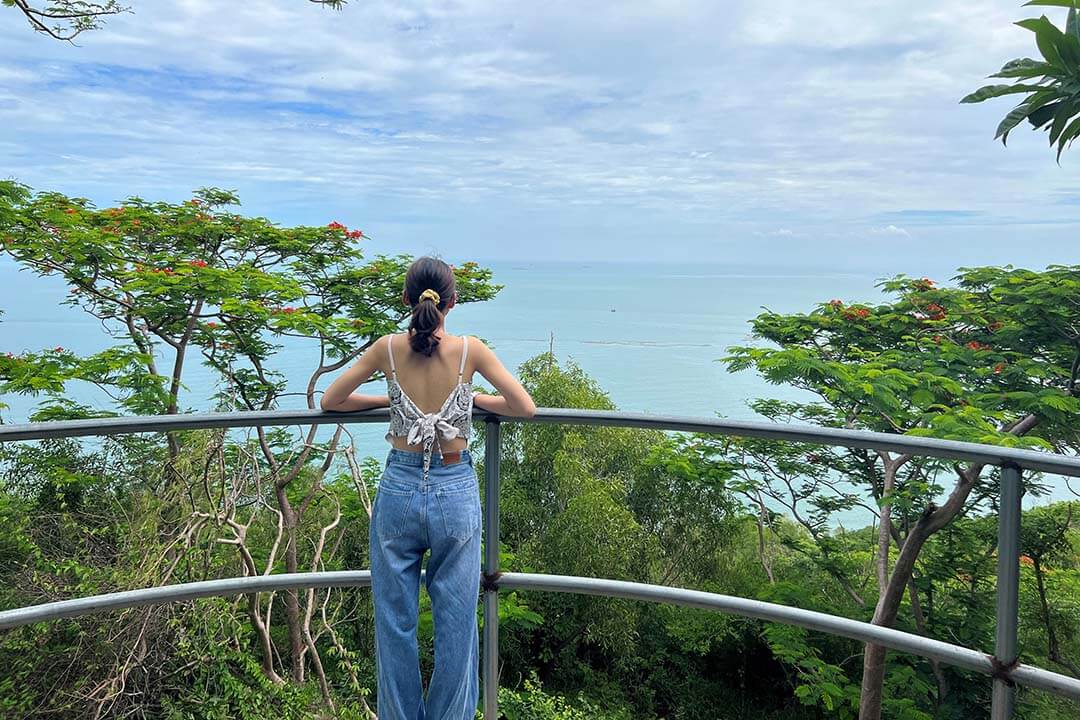
Beyond the lighthouse itself, the site offers expansive views of Vung Tau City and the surrounding sea, allowing photographers to frame stunning wide-angle shots. The vantage points around the lighthouse capture the city’s skyline and the vast ocean, offering a rich variety of compositions. In addition, you can see the Jesus Christ Statue of city or city overview from the Vung Tau Lighthouse, adding another layer of interest to your photographs. This striking statue, standing tall on a nearby hill, provides an excellent focal point in your landscape shots, juxtaposing man-made art with the natural beauty of the area
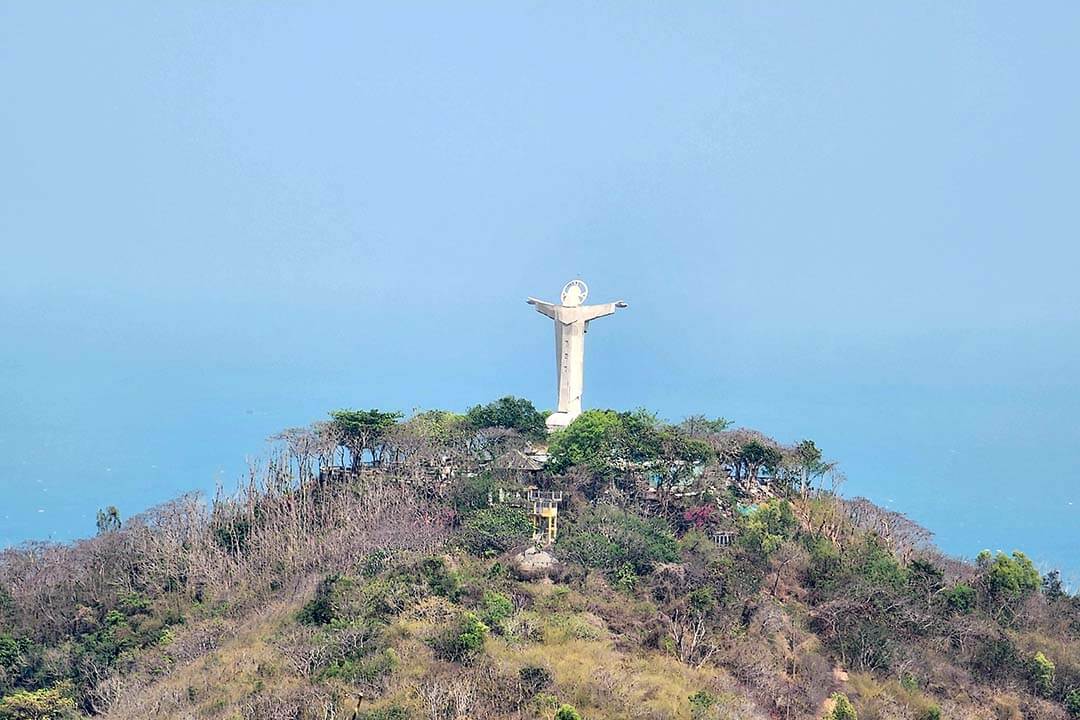
Admire the sunset from Vung Tau Lighthouse
As the day draws to a close, the Vung Tau Lighthouse transforms into an even more magical spot. The elevated position of the lighthouse provides an unobstructed view of the horizon, making it an ideal place to admire the sunset. The sky is painted in hues of orange, pink, and purple, casting a warm glow over the landscape.

The sun dips slowly into the sea, creating a breathtaking scene that’s perfect for photography or simply soaking in the moment. Watching the sunset from the lighthouse offers a peaceful and serene experience, allowing you to appreciate the natural beauty of Vung Tau in its most tranquil state.
Enjoy Vung Tau’s local food
While visiting the lighthouse, you have a fantastic opportunity to explore the local culinary scene. Vung Tau is renowned for its vibrant food culture, particularly its fresh seafood and street food. Here’s a closer look at some of the delectable dishes you can savor:
- Banh khot: Banh khot are small, golden pancakes made from a batter of rice flour, coconut milk, and turmeric. The pancakes are crispy on the edges and tender in the center. They are typically topped with ingredients such as small shrimp, slices of pork, or squid, and garnished with green onions.
- Banh xeo: Banh xeo are large, crispy Vietnamese crepes made from a batter of rice flour, coconut milk, and turmeric. The batter is poured into a hot pan to create a thin, crispy layer. The crepe is then filled with a mix of pork, shrimp, bean sprouts, and mushrooms.
- Fresh seafood platters: Vung Tau is famous for its fresh seafood, which includes a variety of options such as grilled fish, steamed prawns, fried squid, and clams. The seafood is usually caught locally and prepared to highlight its natural flavors.
- Street food vendors: Local street food vendors offer a range of popular Vietnamese snacks, including goi cuon (fresh spring rolls) and cha gio (fried spring rolls). Goi cuon is made with rice paper and filled with fresh ingredients like shrimp, pork, vermicelli noodles, and vegetables. Cha gio are deep-fried rolls filled with a mix of minced pork, mushrooms, and vermicelli.
- Dining with a view: Several local eateries near the lighthouse offer outdoor seating with stunning views of the lighthouse and the sea. These dining spots provide a picturesque setting where you can enjoy your meal and the beautiful coastline.
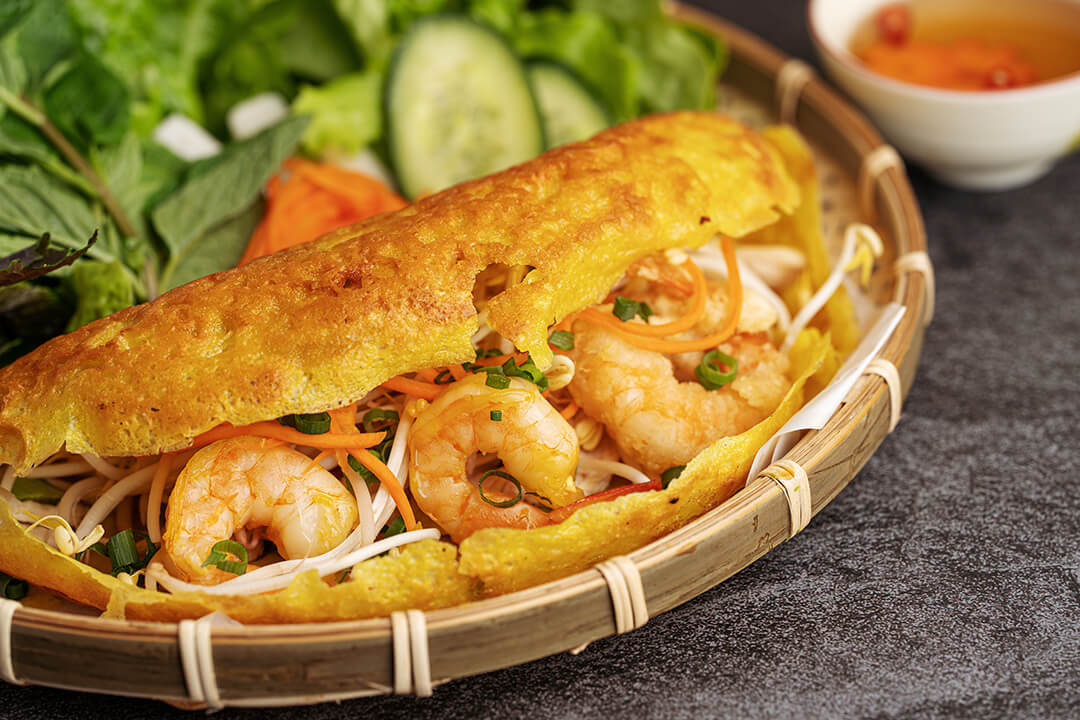
You can discover more about best foods of Vietnamese to experience Vietnam cuisine
Other attractions near Vung Tau Lighthouse
The area surrounding the lighthouse is rich with other attractions, making it a perfect destination for a full day of exploration. From spiritual sites to recreational parks, there’s something for everyone.
South Sea Guanyin Pagoda
Situated close to the lighthouse, the South Sea Guanyin Pagoda offers a tranquil retreat dedicated to Guanyin, the Goddess of Mercy. The pagoda is highlighted by its grand statue of Guanyin, which gazes serenely over the ocean, symbolizing benevolence and protection. This prominent figure serves as a spiritual focal point for visitors seeking solace and inspiration.
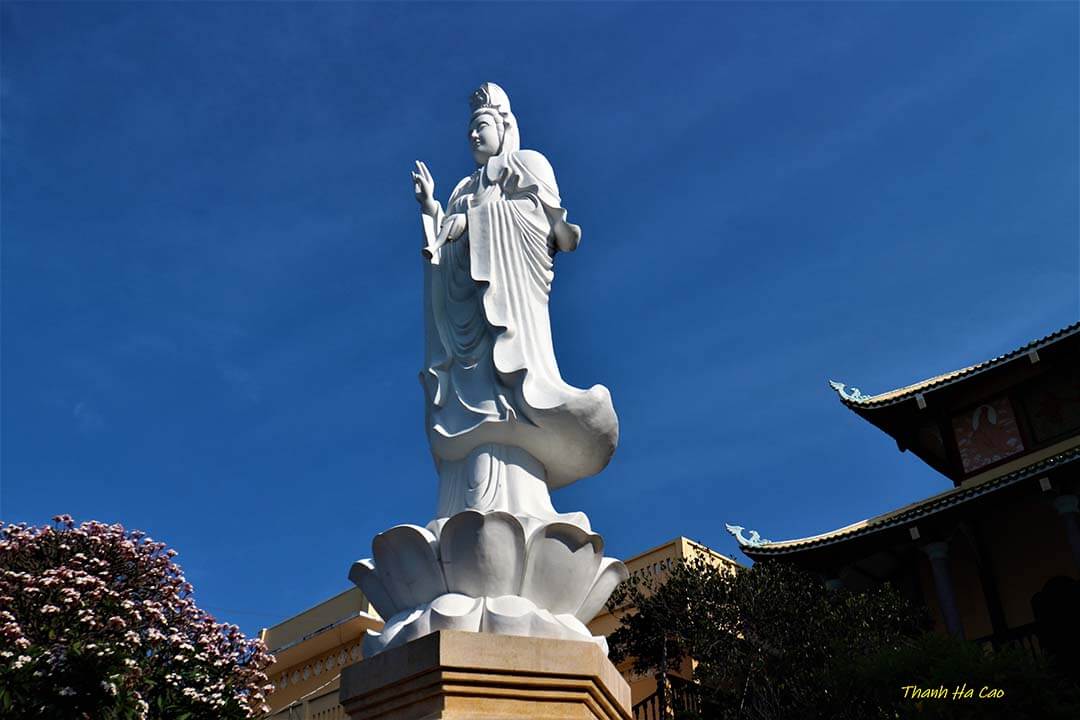
The pagoda is surrounded by meticulously designed gardens and peaceful walkways, creating a serene environment for reflection. Visitors can explore these lush spaces while enjoying expansive views of the coastline, which adds to the pagoda’s calming effect. The harmonious blend of spiritual symbolism and scenic beauty makes this location a perfect place for introspection and relaxation.
Tran Hung Dao Temple
Situated near the lighthouse, the Tran Hung Dao Temple is dedicated to the celebrated Vietnamese military leader who played a crucial role in defending Vietnam from Mongol invasions. The temple is a prominent cultural site, characterized by its traditional Vietnamese architectural design and an array of historical artifacts linked to Tran Hung Dao.
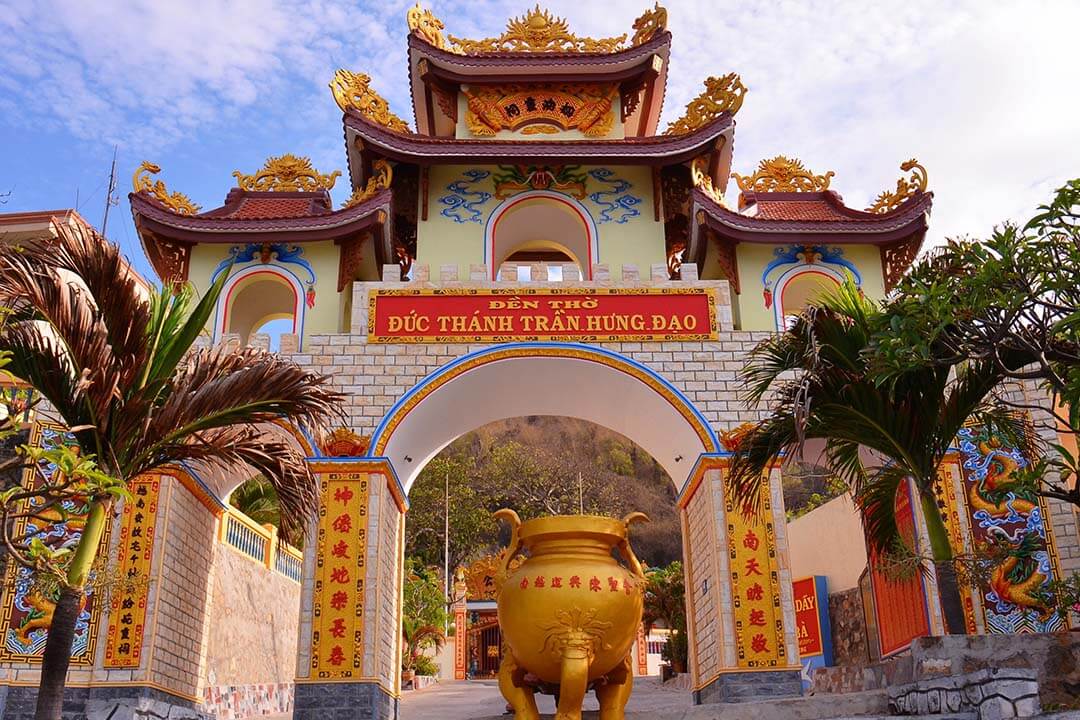
Visitors can explore the temple’s detailed carvings, ceremonial halls, and educational exhibits that provide insights into the country’s rich military history. Beyond its role as a place of worship, the temple offers a deep dive into Vietnam’s heroic past, making it an enriching destination for those interested in learning about the nation’s heritage and honoring its historical figures.
Flagpole Park
Situated at the base of Tao Phung Mountain, Flagpole Park is renowned for its impressive flagpole, which proudly displays the Vietnamese flag. This cherished recreational area features expansive green lawns, meticulously maintained walking trails and scenic overlooks. The park is a favored destination for both locals and tourists seeking a peaceful retreat.
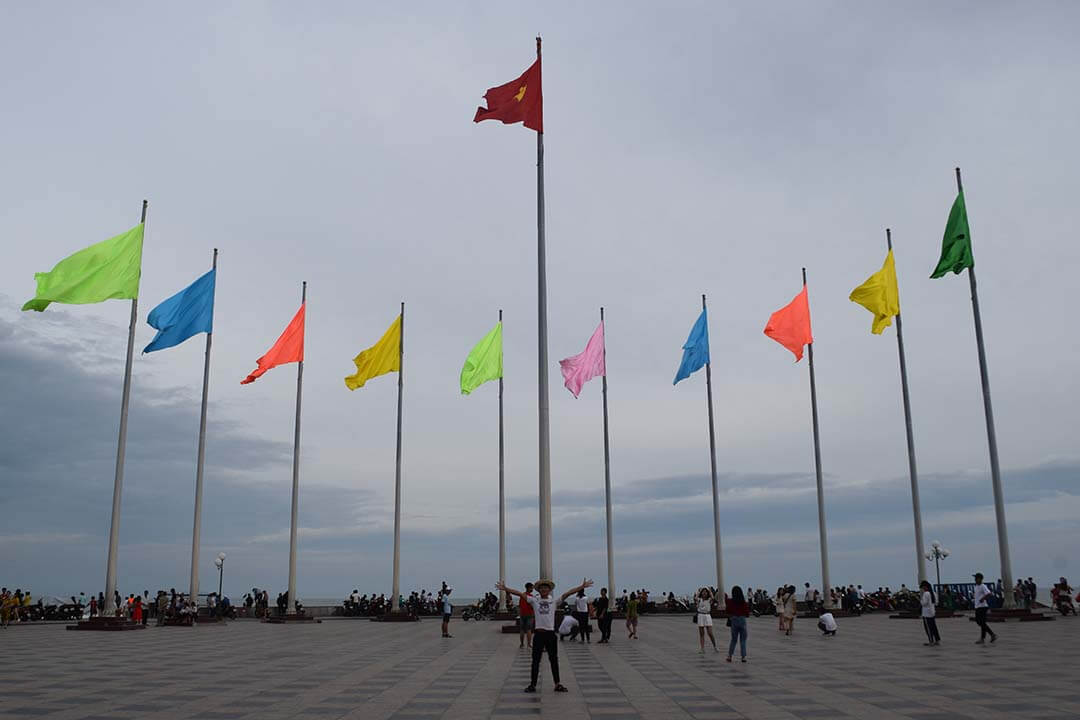
Visitors can enjoy strolls along the well-paved paths, find comfort in the park’s numerous seating areas, or savor a picnic amidst the serene surroundings. The elevated viewpoints within the park offer sweeping views of the nearby coastline and cityscape, enhancing the outdoor experience. The park’s tranquil environment and thoughtful design make it an ideal spot for relaxation and enjoyment of the natural beauty.
Front Beach and Back Beach
Vung Tau’s Front Beach and Back Beach each provide unique coastal experiences that cater to different interests.
Front Beach is renowned for its peaceful environment and gentle waters, making it ideal for a relaxing day by the sea. The calm, shallow waves are perfect for swimming, while the wide sandy area is well-suited for sunbathing and casual strolls. Visitors can enjoy unobstructed views of the serene ocean, and the beachfront is dotted with amenities such as local food vendors and shaded seating, adding to the comfort and ease of the experience.
Back Beach, on the other hand, is characterized by its vibrant energy and diverse recreational activities. This beach is a hub for water sports enthusiasts, offering opportunities for kite surfing, jet skiing, and windsurfing. The robust waves and expansive shoreline support these thrilling activities, while the lively atmosphere and array of food stalls contribute to a bustling, energetic environment. Each beach, with its distinctive appeal, enhances Vung Tau’s coastal allure, providing tailored experiences for every type of visitor.
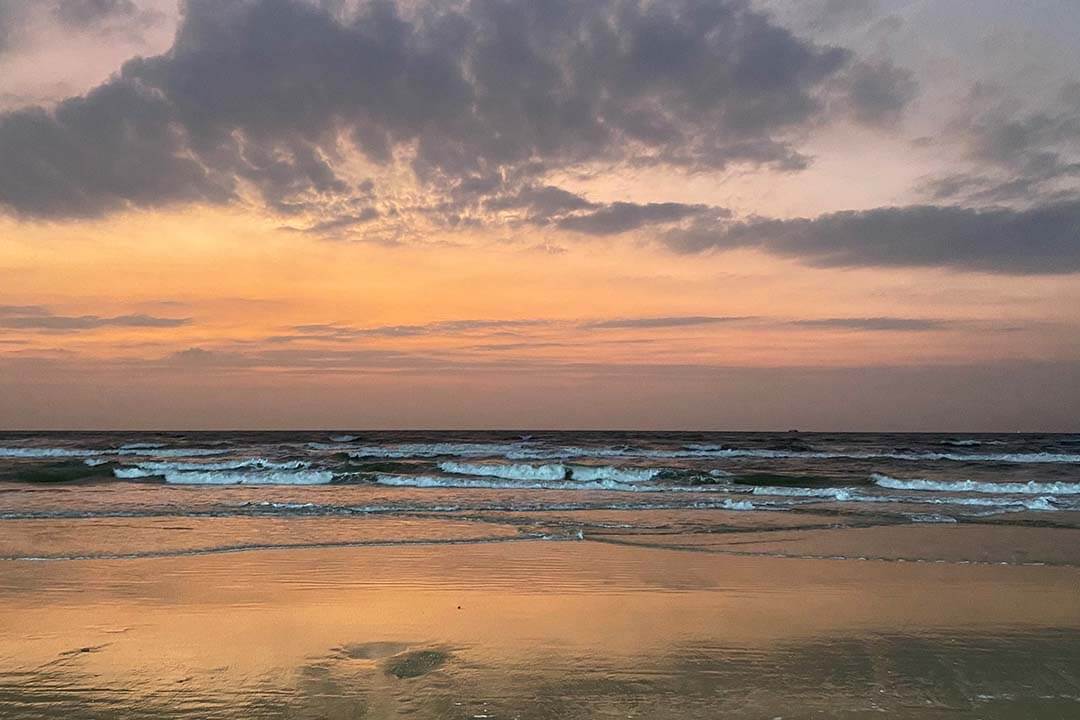
Tips for a smooth trip to the lighthouse
To ensure a smooth and enjoyable trip to the lighthouse, here are some useful tips:
Plan your visit: Check the weather of Vietnam forecast and plan your visit during the dry season for the best experience.
- Wear comfortable clothing: The journey to the lighthouse involves some walking or hiking, so wear comfortable shoes and clothing.
- Stay hydrated: Bring water, especially if you plan to hike or explore the area extensively.
- Capture the moment: Don’t forget your camera or smartphone to take photos of the stunning views.
- Try local food: Make time to enjoy the local cuisine and experience the culinary delights of Vung Tau.
- Respect the environment: Keep the area clean and respect the natural surroundings.
The Vung Tau Lighthouse, an iconic landmark built by the French in 1862, stands majestically on Tao Phung Mountain. Its prime location offers breathtaking panoramic views of Vung Tau and the expansive sea, blending historical significance with natural beauty. For more detailed insights and travel recommendations, explore our blog at Vietnam Travel Tips and make the most of your visit to this stunning historical gem!


